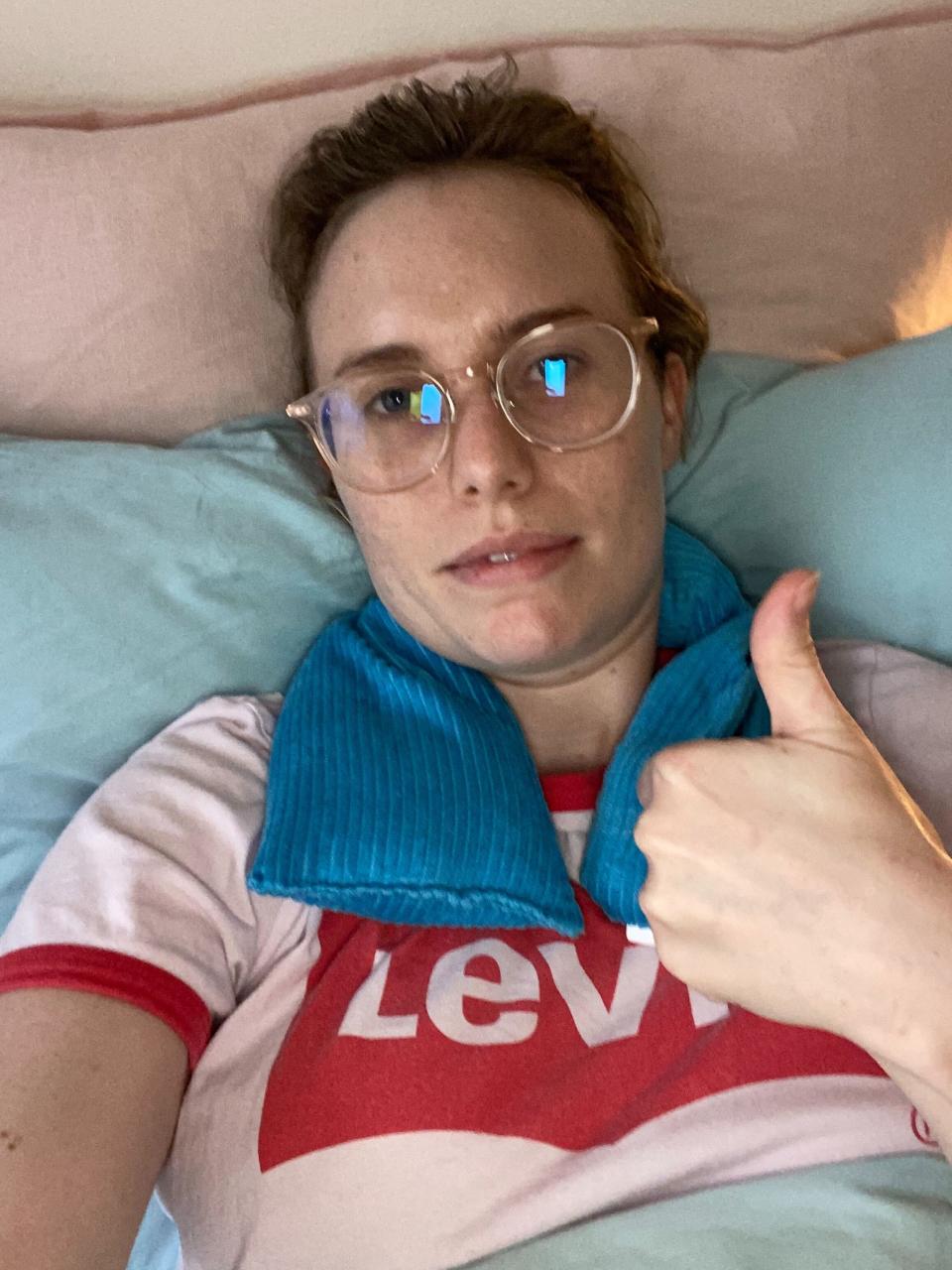Coronavirus 'long-haulers' who tested negative demand answers
The plight of COVID ‘Long-Haulers’ is becoming more apparent. Months after initially falling ill with coronavirus, there are thousands of people who are still experiencing debilitating symptoms, such as extreme fatigue, neurological issues and fibromyalgia.
But what makes it particularly hard for many of these people, is that, despite their symptoms being consistent with those who have received positive COVID tests, they have tested negative. New research indicates that more than 20 per cent of coronavirus tests show up as “false negatives”, something actress Alyssa Milano has experienced.

People rarely get a positive test in the first three days of their infection, according to research from John Hopkins University. The US university collated results from 1,300 people and found the best time to get a positive result is between six and eight days after infection — and even then, tests missed about one in five confirmed cases.
These false negative tests have two effects; firstly, it can mean people who have coronavirus may be unknowingly transmitting it because they believe they don’t have it.
Secondly, it leaves people with negative tests who are still feeling unwell, desperately searching for answers.
RELATED:

‘I thought I might die in my sleep’
Gillian, 30, from Sydney, knows exactly what this feels like. In March, she cut her US holiday short to return home to Australia. She isolated at home with no symptoms, until, on day 14 she woke up “feeling like death.” She says: “I had sweats, chills, full-body aches and pains, but none of the hallmark coronavirus symptoms such as a cough, sore throat or trouble breathing.”
Her COVID test came back negative, but she got sicker and sicker. Despite her negative test, no GPs wanted her in the surgery, so she eventually went to the emergency department where they ran blood tests, did a chest x-ray, and another COVID test.
“Everything came back clear,” she says. “They told me there was nothing they could do and sent me home. I was so weak I kept passing out just sitting in the chair. I was terrified to go home alone — I felt so bad that I thought I might die in my sleep.”
Her symptoms were so similar to thousands of people on COVID long-hauler support groups, she believes she caught COVID on the plane home from America.

Back at home, Gillian’s GP ran more tests. “On paper I was a perfect, healthy person,” she says. “In reality, I could barely get out of bed. I’d get up, go to the bathroom, and be so exhausted I had to go back to bed. I couldn’t work for three months.” She was eventually diagnosed with post-viral fatigue and fibromyalgia caused by a “mystery virus,” although her GP has admitted she “might have” had COVID.
Five months on, she is able to “shuffle to the shops” and is working from home, but still has to limit exercise and socialising. “I absolutely believe if I’d had a positive test I would have been treated very differently,” she says.
“I understand that medical staff are learning on the fly about COVID, but I wish people had been more open to understanding I had nearly all the same symptoms of other COVID long-haulers. I also wish the amount of false negative tests had been taken in to account when I was talking about my symptoms.”
Fiona, 35, has had a similar experience. After travelling around Australia, she woke up one morning feeling dizzy, and had lost her sense of smell – one of the main COVID symptoms.
A COVID test was negative, but her symptoms increased; brain fog, slurred speech, migraines, no taste or smell, and no vision in her left eye caused her to see a neurologist, who told her she had “acute inflammation of the brain” — but couldn’t explain why.
Demand for antibody testing
Four months later she is still experiencing symptoms and has been diagnosed with “post-infection inflammation syndrome” — which is common after being exposed to a strong virus. Like Gillian, “all my symptoms are in line with other long-haulers who have tested positive for COVID,” she says.
“It seems like too much of a coincidence. My doctor won’t definitely say he thinks I’ve had COVID because then it’s his name against a negative test. I’d really like an antibody test to prove what I already know.”
Both women are struggling to get an antibody test to show whether their immune systems have encountered COVID-19. The TGA says they have “expedited assessment of applications” for the tests, but the Royal College of GPs told Yahoo Lifestyle “it looks like the antibody test is not available yet.”
Both women would like to have their diagnosis confirmed, “A positive antibody test wouldn’t change anything, but it would give me some resolution,” says Gillian. “It would allow me to understand what has happened to me. I’d feel happier knowing I could give a name to it.”
Click here to sign up to our daily newsletter to get all the latest news and hacks. Or if you have a story tip, email us at lifestyle.tips@verizonmedia.com.

 Yahoo Lifestyle
Yahoo Lifestyle 




